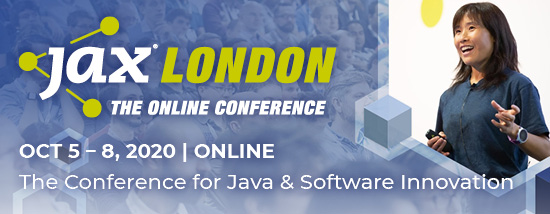A research study by The National Center for Women & Information Technology showed that “gender diversity has specific benefits in technology settings,” which could explain why tech companies have started to invest in initiatives that aim to boost the number of female applicants, recruit them in a more effective way, retain them for longer, and give them the opportunity to advance. But is it enough?
Four years ago, we launched a diversity series aimed at bringing the most inspirational and powerful women in the tech scene to your attention. Today, we’d like you to meet Karishma Vinayak, Associate Manager, Solution Architects – Presales at Red Hat.
Today’s Woman in Tech: Karishma Vinayak, Associate Manager, Solution Architects – Presales at Red Hat
 Having been serving in the IT world for over 20 years, Karishma Vinayak has experience working in a diverse range of functions as a female manager in tech. She proudly identifies as a passionate promoter of women in technology and looks to build cultures of diversity and inclusivity in her work, and as a coach to young people interested in a career in STEM. Karishma Vinayak works at Red Hat where she is an Associate Manager. She is an active member of the Women Leadership Community at Red Hat and leads outreach programmes for universities.
Having been serving in the IT world for over 20 years, Karishma Vinayak has experience working in a diverse range of functions as a female manager in tech. She proudly identifies as a passionate promoter of women in technology and looks to build cultures of diversity and inclusivity in her work, and as a coach to young people interested in a career in STEM. Karishma Vinayak works at Red Hat where she is an Associate Manager. She is an active member of the Women Leadership Community at Red Hat and leads outreach programmes for universities.
When did you become interested in technology? What first got you interested in tech?
My introduction to technology was not driven by an innate interest, but rather by experimentation. Among my family and family friends, accountancy and banking were the two predominant fields of choice. I had no connection with technology and it was never brought up in day-to-day conversations. At school, we had short computer lessons once every three weeks. The subject was not taught as part of the curriculum but introduced for learning the basics. What intrigued me in those lessons was the phenomenon of “Input-Process-Output” and problem solving.
I studied history at university and at the time did not have much clarity on my future. It was my godfather who changed the course of my life. I distinctly remember the day when he drew my attention to a newspaper advert of a renowned institute putting a spotlight on computing and software development. I wasn’t sure software development was something I would enjoy doing, however, I took his advice and enrolled in the course. That was the beginning and there was no looking back – the more hours I spent coding, the more fascinating it became when developing algorithms.
How did you end up in your career path? What obstacles did you have to overcome?
I established early in my career that technology is where my interest and strengths lie, and I held onto that anchor throughout my work life when I transitioned to different roles.
Spending long nights coding and writing complex algorithms fueled my drive to dive deeper into software development and its lifecycle. My work as a developer was recognised by a senior colleague who introduced me to the product design team. It was a steep learning curve understanding different design patterns, models and methodologies, however, I received help and support from my peers along the way. That experience enabled me to paint the overarching picture, in which software design and development was the centerpiece of the value delivery cycle for a customer. The quest to discover the operations of the pre- and post- stages carved out my career progression.
Speaking of obstacles – taking a short maternity leave and returning to work in the same position only to find yourself a stranger hits hard. After I had my daughter, it took me a while to find my feet and start again from the ground up to re-earn that status. Unless you are lucky enough to have a compassionate boss, taking a break can definitely regress your career by a few notches.
Also, giving 100% both at work and at home is mentally and physically demanding. There were many instances where I was torn between work duties and family responsibilities and choosing one over the other was not an option. To recall one incident, I had a project that was going live for a mobile service provider and the last code deployment failed. Whilst being on the escalation call, my daughter got sick. Discussing the service recovery plan while simultaneously comforting my little one was nerve-wracking.
Did you receive support from your family and friends? Do you have a role model?
Although my family could not contribute to my learning of the subject, their support and trust was invaluable. I took risks and failed numerous times. I also experienced incidents of being belittled by a male-dominated peer group, which was demotivating and threw me into self-doubt. But my parents always stood by me and never imposed their judgment on me.
I did not have one particular role model in tech but Katherine Johnson, an American Mathematician, was a source of inspiration to me, particularly for her perseverance and for teaching me the power of advocating for yourself. I also look up to Allison Rose, CEO of Natwest Group and Melissa Di Donato, CEO of SUSE. Both are incredible women with inspiring career journeys which I refer to in testing times.
I make a conscious effort to foster an inclusive environment in the workplace to allow a safe space for team members and unlock their potential.
Did anyone ever try to stop you from learning and advancing in your professional life?
Battling for my first placement after completing my degree gave me a taste of how challenging the journey would be. I was denied my preferred role in research and development (with the feedback that ‘entrance is tough’), but joined the institute as a lab assistant for final year students, working long hours, and then I advanced to teaching programming for a while. This experience helped me prove my capability and I eventually got a break in R&D.
When I moved to the UK, the situation was no different. My voice and opinions either went unheard or were dismissed by male coworkers. Previous encounters had made me thick-skinned and I focused my attention on allies who supported me in combating the pushback and bias, both conscious and unconscious.
Having now worked in the industry for more than 20 years, I make a conscious effort to foster an inclusive environment in the workplace to allow a safe space for team members and unlock their potential.
A day in Karishma’s life
I joined Red Hat UK 5 years ago in the Presales function of the EMEA region. I was the first hire into the role, designed to manage complex projects for prospects to demonstrate the “proof of value” of Red Hat solutions. Along with the product subject matter experts (referred to as Solution Architects in Red Hat), I engaged with our customers to understand their business problems, which we then deconstructed to design a technical solution to showcase how their business challenges can be addressed with Red Hat technology. I expanded the team over time and crafted the strategy for the team to better serve our customers with efficiency and efficacy.
Being a servant leader comes naturally to me and that drew me towards people management. After working as an individual contributor for the first few years at Red Hat, I embraced the opportunity to serve in the role of Associate Manager, Solution Architects. Transitioning to a people management role was like having an identity shift. However, empowering my team to bring their A-game to work for leading our customers and partners to success, and helping them attain their goals, is extremely rewarding and gives me fulfilment.
Outside my day job, I am an active member of the Women Leadership Community at Red Hat and lead outreach programmes for universities to support and encourage a whole new generation of talent into open source technologies.
What are you most proud of in your career?
I am proud to be a servant leader and a conduit to the success of others. My “Why” – “Inspire every human being to unleash their ‘inner awesome’ to live the life they desire” – perfectly plugs into the Red Hat “Why” – “Open unlocks the world’s potential”. And I am extremely grateful to be in a position where I can serve the community.
Why aren’t there more women in tech? What’s your take on that?
The answer to this question can be traced back to the formative years of growing up and cultural and social beliefs of the surrounding ecosystem. It has historically been the status quo for girls to consider nurturing roles and consequently, they have had less exposure to technology and complementing sciences. It is that conditioning and lack of awareness that gradually drifts girls away from tech. In primary school you will find both girls and boys claiming to love maths and science and they perform at par on standardized assessments. In secondary school though, it starts shifting dramatically. For example, boys are enrolled in computer science at a much higher rate than girls. This then continues into university and the percentage of women in computer science and engineering courses significantly diminishes for various reasons – one is that being in the minority is a challenge in itself.
On that note, I have a plea for parents: please let your daughters explore all possibilities and encourage them to experiment and take risks. Also, my earnest request to all accomplished women in tech is to please be that source of light and support for other women who aspire to a career in technology.
Could you name a few challenges (or obstacles) women in tech face?
Being in the minority makes it very hard for women. First at an entry level, where women often don’t even make it to the interview let alone securing the job offer, and second, to thrive in a male-dominated environment is not an easy feat. It’s encouraging that organisations today are putting in place measures for the hiring process and shaping job descriptions to be gender neutral to attract a balanced pool of applicants.
Another issue that prevails for women across all industries is that to get promotions and career development opportunities, women have to work harder to prove themselves worthy. The promotion criteria are not fairly applied to women. Women are seen as risk-averse and that is viewed as being slow when positioned next to their male peers, when in reality, that means women are usually much better at scenario planning.
You are bound to hit roadblocks along the way, but remember many others have been on this journey.
The discussion about diversity is gaining momentum. How long will it take to see results from the current debate?
The importance of diversity has been recognised by companies as an imperative and it is indeed a key topic on the agenda of the corporates, where we’re seeing both qualitative and quantitative measures being instated to attract diverse talent and focus on gender diversity within teams. The revolution is in motion, though quoting a timeline for when this will be the norm is hard, as the onus lies on each one of us to accelerate its pace with conscious effort.
Addressing gender diversity in tech hires is only one side of the coin. The other side is to tackle the limited uptake of tech disciplines by women in academia. Although there has been significant positive change since previous decades, the proportion of women is still far from adequate.
The development in technology has made remote working possible today, something that was unthinkable a few years ago. This has opened more opportunities for women who historically struggled to maintain a work-life balance and resorted to limited employment opportunities that allowed them to be with their families.
What advice (and tips) would you give to women who want a tech career? What should they know about this industry?
“I can and I will!” Inject this mantra into yourself. Technology is a multifaceted discipline with diverse applicability – find something that interests you and if nothing immediately surfaces, don’t be fooled by that traditional sabotaging belief that tech is not for women. Go explore and experiment! This is how I embarked on my journey in tech. I am grateful to my inner voice that propelled me forward.
Technology is crafting the future that we and future generations will witness. Innovation is being powered by the work of millions of people and fueled by big tech giants. Just imagine the future being constructed without a balanced input of intellect from men and women – this should send a shiver down your spine and boost your motivation.
You are bound to hit roadblocks along the way, but remember many others have been on this journey. Take guidance from someone in the field and connect with like-minded people. I cannot emphasise enough the value of having a mentor, something I only fully realised midway through my career.
Go without hesitation, read, research, get tinkering with tech and don’t let anything hold you down!
More Women in Tech:
- Women in Tech: Eva Pittas, co-founder and COO of Laika
- Women in Tech: Bernadette Nixon, Chief Executive Officer and Board Member at Algolia
- Women in Tech: Sara Boddy, Senior Director F5 Labs
- Women in Tech: Amelie Lang, Product Manager for web, MEW, and CMS at kicker
- Women in Tech: Susanna Lawson, CEO and Co-founder of OneFile
- Women in Tech: Richa Dhandhania, Head of Analytics, Raisin DS
For even more Women in Tech, click here
The post Women in Tech: “Technology is a multifaceted discipline with diverse applicability” appeared first on JAXenter.
Source : JAXenter



















